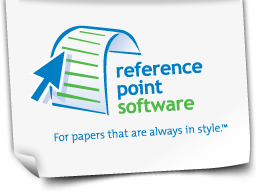Top Strategies for Meeting Deadlines When Writing Your College Papers
Probably the most stressful thing about being a student is writing college papers to meet deadlines or risk losing grades if you donΓÇÖt get your work in on time. The pressure can be even more intense if you have to juggle a job and/or family responsibilities. While this can lead to panic for many, there is a strategy to streamlining your approach so you can reach your deadlines comfortably.
Before you get started, itΓÇÖs essential to plan your work carefully. A little time spent planning upfront will save a lot of time later. With that being said, hereΓÇÖs a sample plan assuming that youΓÇÖre writing college papers with a two-week deadline.
Days 1 – 2
Choose your topic or, if the topic has been assigned, choose how you intend to approach it. Gather some preliminary information and do some brainstorming to generate more ideas. Remember to write them down clearly as you go. This will help you find the main focus of your paper.
Days 3 – 6
Access to additional research materials. Books, magazines, and the internet are good sources. Your subject may require you to perform interviews or other hands-on methods of collecting information. Give yourself four days to conduct your primary research and create a first rough outline. Remember to write relevant, useful quotes on cards and keep them to one side. Use them appropriately to support your assertions later. Be sure to make a precise note of the source of each quote so you can cite them properly.
Day 7
Write a proper outline. A lot of students try to skip this crucial step thinking it will save time. It wonΓÇÖt. An outline is critical. ItΓÇÖs a blueprint for your paper and, if appropriately done and referred to often, it will keep you focused, so you donΓÇÖt wander off-topic and waste time when you write your paper.
Once youΓÇÖve finished the outline, write your thesis statement, and refine the main points of your essay. Go over your research to make sure you have enough information to complete the first draft.
Days 8 – 10
Write your first draft. Have all your notes, the outline, your thesis statement, and quotes assembled? Take the time to make your introductory paragraph interesting and attractive to your reader, and be sure to include your thesis statement. Make your assertions in the main body of the paper, using your research data and quotes to support your argument. Your conclusion at the end should be strong and refer back to your thesis statement. Cite your quotes accurately using the correct formatting styles.
Days 11 – 14
Edit again. And again. And again. Read through your paper carefully, checking for spelling and grammar mistakes. Make sure your sentences are clear and say precisely what you mean. If editing your work is difficult, it may be that youΓÇÖre too close to your own material. Read my article, “Howto Edit Your College Essay with Objectivity” for some helpful tips. You may want to enlist the help of anyone whose opinion you trust to read your paper, too. A fresh pair of eyes will catch mistakes that you may miss. Plus, they may have useful suggestions to make your paper stronger. Then set your paper aside.
After youΓÇÖve had some time away from your paper, read through it again from beginning to end, focusing on the strength of your thesis, supporting points, and how effortlessly your paper flows. Do another read through to check again for spelling, grammar, and punctuation mistakes. Then, perform a final edit for proper formatting.
Trying to assess the flow of your paper is difficult if you are stopping to correct formatting errors at the same time. There are various formatting styles you will likely use when writing college papers. It can be easy to get mixed up as to the proper guidelines for things like margins, citation style, and headers when you have to switch between styles frequently.
While performing these additional reviews may seem excessive, you will be more effective when you do them separately. You can reduce the time you spend on editing your papers and lower your stress level by using software that guarantees your papers adhere to the proper formatting styles with just a few clicks of the mouse. If you follow this outline and use the software tools available, you will be able to stay focused and turn your papers in on time with confidence.
For more information about APA or MLA formats contact us today.
David Plaut is the founder of Reference Point Software (RPS). RPS offers a complete suite of easy-to-use formatting template products featuring MLA and APA style templates, freeing up time to focus on substance while ensuring formatting accuracy. 
Reference Point Software is not associated with, endorsed by, or affiliated with the American Psychological Association (APA) or with the Modern Language Association (MLA).
